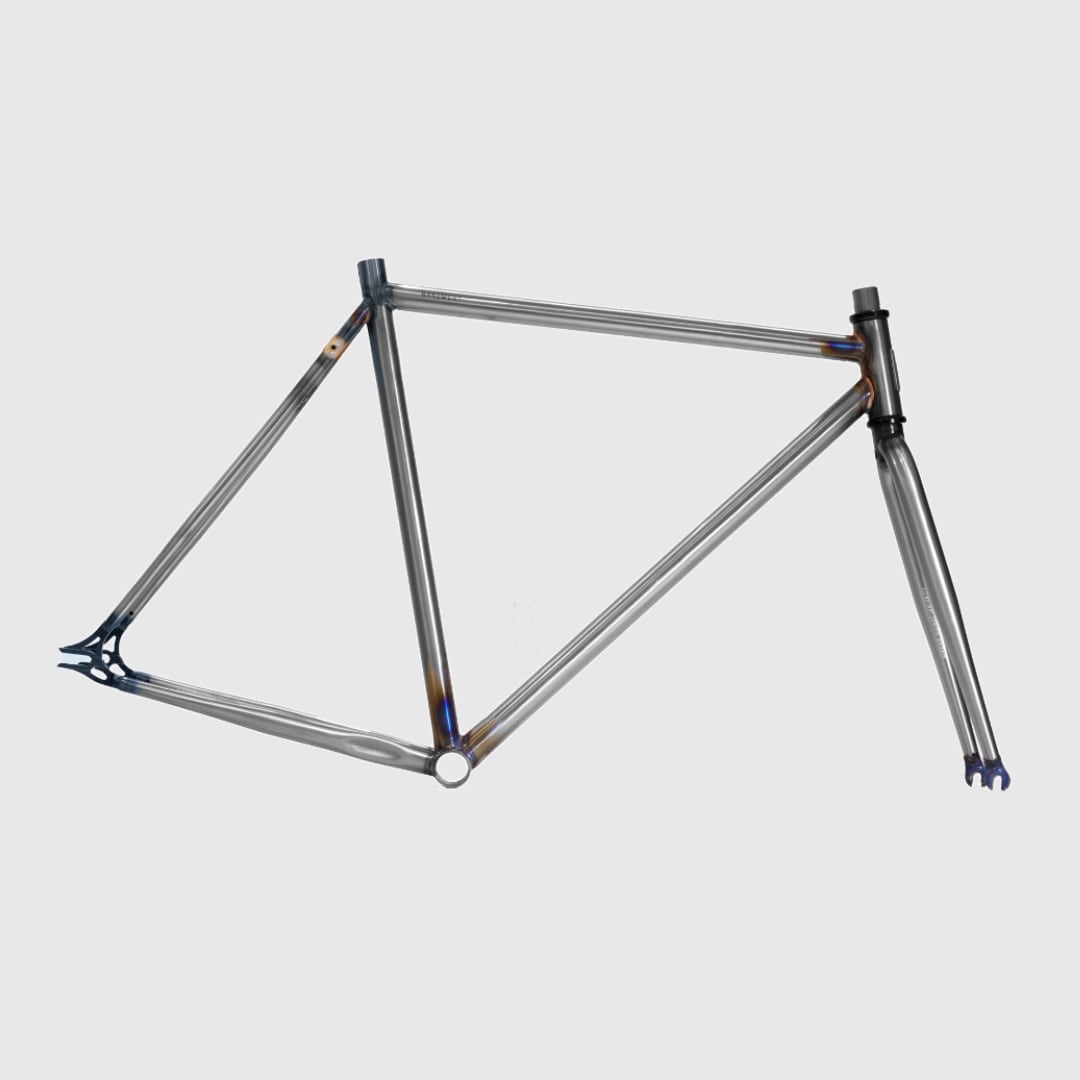Nossas bikes são construídas em aço do tipo cromo-molibdênio, comumente conhecido como Cromoly. É um aço mais nobre que o aço de baixo carbono, este último o mais usado na fabricação de bicicletas.
Para entender os benefícios do Cromoly em relação à outros materiais, é preciso em primeiro lugar entender alguns conceitos:
Rigidez
A rigidez, por sua vez, está relacionada a elasticidade do quadro quando submetido à tensões. A rigidez de um quadro é dada pelo material utilizado e pelo design e engenharia, que especifica as dimensões dos tubos e perfis utilizados na construção.
Resistência
É a capacidade do quadro de suportar as solicitações externas sem que haja uma deformação permanente ou ruptura total sob tensão. Quadros de Cromoly apresentam melhor resistência a impactos pois são capazes de absorver e distribuir grandes quantidades de energia sem quebrar.
Alumínio
O alumínio é o segundo material mais comum. Proporciona quadros bastante rígidos, o que é desejável quando se trata de performance de competição. Mas essa rigidez não vem das propriedades do material. Por ser um material menos denso, requer um diâmetro de tubo maior e também uma espessura de parede também maior. Por isso, as bicicletas de alumínio podem pesar tanto quanto uma bicicleta de aço comum. E mais pesadas que bicicletas de Cromoly.
A rigidez vertical de um quadro de alumínio contribui para um rodar mais duro, transmitindo um espectro maior de vibrações ao ciclista. Este efeito pode ser mitigado com uso de suspensão. Em bikes de estrada, esse efeito pode também ser amenizado pelo uso agora comum de garfos de fibra de carbono, mais flexíveis.
Nem todo aço é igual.
O aço é excepcionalmente durável e altamente resistente à fadiga. Mais bicicletas são feitas de aço do que qualquer outro material. Ele foi a escolha universal de quadros de bicicletas de corrida até o surgimento do alumínio nas décadas de 1970 e 1980. E claro, a fibra de carbono que surgiu nos anos 90.
Existem basicamente dois tipos distintos de aço usados na indústria de bicicletas:
O Hi-Ten: Este é um aço de Classe mais baixa, normalmente 1020, comumente encontrado em bicicletas mais baratas. Especialmente as de lojas de departamento. Ele oferece uma boa relação de resistência e peso.
O Cromoly: Bicicletas de aço mais sofisticadas provavelmente usarão Cromoly, ou CroMo. Um aço de liga de cromo (0,8% a 1,1% ) e de molibdênio (0,15% a 0,25%) para aumentar a resistência com um teor médio de carbono 0,28 % a 0,33% . Também utilizado em aplicações aeronáuticas e na construção de veículos para competições automotivas.
Esse material nos permite projetar quadros mais leves que consideram uma certa quantidade de flexibilidade usando tubos com paredes mais finas. Tubos que passam por um processo chamado “butting” que essencialmente afina o centro dos tubos para redução de peso, mantendo as extremidades fortes para o ponto de solda.
Isso se traduz em um quadro que pode ser tão leve quanto um quadro de alumínio e no que os ciclistas chamam de “quadro vivo” ou “quadro com elasticidade”, e que proporciona uma condução mais suave e confortável.
O Cromoly é mais resistente que o alumínio, no entanto, sua densidade é um pouco maior (peso do material), mas por ser mais resistente, pode ser mais fino e entregar um quadro com menor rigidez. E ele é mais confiável: com modos de falha mais previsíveis deformando-se antes de quebrar. O alumínio, por outro lado, é mais suscetível à fadiga, e nesse modo de falha comporta-se como o vidro, podendo quebrar sem apresentar deformação.
Agora que você tem esses conceitos em mente, vamos abordar as características práticas para a escolha dos materiais:
Conforto vs Performance
Se você planeja competir, então uma bicicleta de alumínio é a escolha ideal pra você. A rigidez lateral dos quadros de alumínio é muito apreciada em competições, pois eles passam uma sensação real de responsividade, transferindo a força de pedalada de maneira mais imediata.
Por outro lado, se você pretende fazer o uso diário da bike em transporte ou passeios, que requerem mais tempo no selim, então o conforto e a durabilidade são suas prioridades. O aço é a melhor opção nesse caso.
Durabilidade
Todos os materiais vão cansar com o tempo, mas alguns mais rápido do que outros. O aço comum pode oxidar se não for cuidado, já o Cromoly, apesar de também ser aço, suporta melhor a oxidação. Ambos os materiais são mais duráveis que o alumínio a longo prazo, pois este último é menos resistente à fadiga.
Então, se você procura uma bike com desempenho pensado para o ambiente urbano, considere uma de nossas bikes de Cromoly. Eles são clássicas, leves, duráveis, e proporcionam um passeio seguro, eficiente e confortável. Clique aqui e confira

